Antlions part II: The feeding
Nov 2, 2017 19:49:47 #
In my last post I showed how to set up antlion homes in individual cups of sand. Each antlion sits at the bottom of a conical pit in the sand, buried and out of sight, and there they lie in wait for a small insect to stumble in. Their sand trap works because of some interesting physics. The sand pits are precariously stable, with the sand resting at the steepest possible angle called the ‘angle of repose’. Any movement that displaces so much as a grain of sand will create a small avalanche that carries potential prey toward the bottom where the hungry antlion waits. They can detect the slightest vibrations, and if they detect activity they will often stick their heads out of the sand, ready for a potential meal.
I would regularly capture ants and toss one into each pit. The antlions will immediately start to rapidly flip sand upward, creating a continuous avalanche which counters the ants’ struggle to scurry upward to freedom. The action is very fast, and is pretty much a blur to the human eye. If an ant manages to escape, I would let it go free! No, just kidding. Actually, I toss them back in again.
The pictures below show a sequence, leading to the inevitable result.
Next: Even antlion pupae can bite!
I would regularly capture ants and toss one into each pit. The antlions will immediately start to rapidly flip sand upward, creating a continuous avalanche which counters the ants’ struggle to scurry upward to freedom. The action is very fast, and is pretty much a blur to the human eye. If an ant manages to escape, I would let it go free! No, just kidding. Actually, I toss them back in again.
The pictures below show a sequence, leading to the inevitable result.
Next: Even antlion pupae can bite!
Each to their own cup. Ant carcasses are visible.
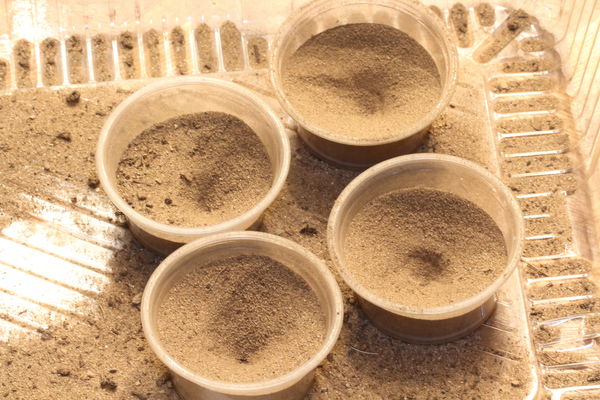
(Download)
It detects something...
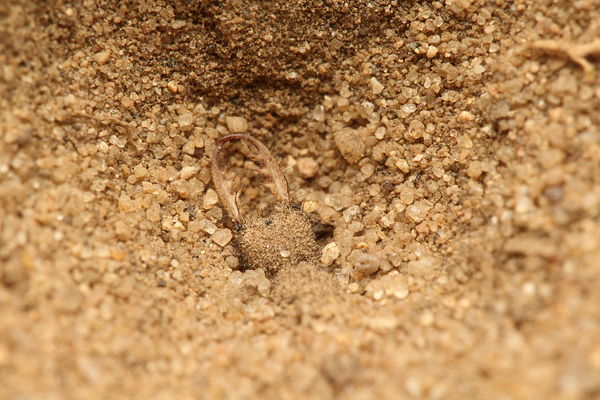
(Download)
A near miss!
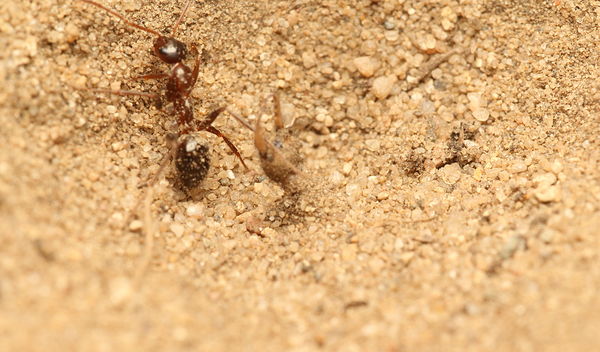
(Download)
Got 'em! Note the jaws around the ants waist.
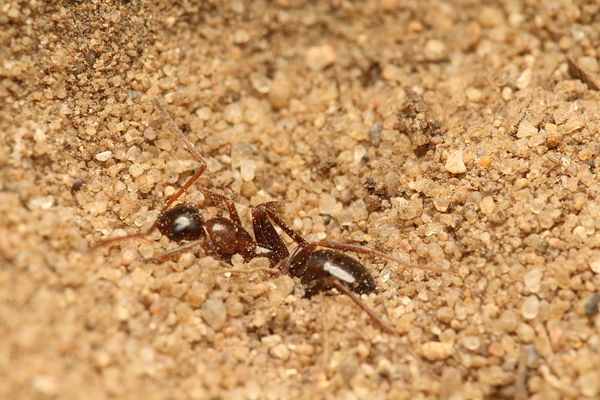
(Download)
Pulled under to certain doom.
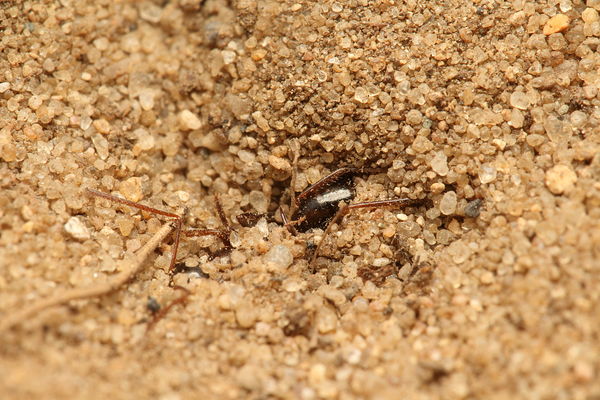
(Download)
Nov 2, 2017 20:07:32 #
Mark, I've enjoyed this series of photos and the relating info. Looking forward to what's left.
I've heard of doodle bugs a lot but didn't know they were ant lions.
I've heard of doodle bugs a lot but didn't know they were ant lions.
Nov 3, 2017 05:03:07 #
Nov 3, 2017 08:07:13 #
love it! i have seen this many times,i used to feed them a lot when i was young
Nov 3, 2017 08:30:34 #
Fantastic series although I do sympathize a little with the poor ant, rotten way to die.
Mark, you have mentioned that you use Gimp and I was thinking of trying it. It seems that raw images have to be changed to another file format such as tiff or dng. I have watched some youtube videos which suggest a few ways to make this change i.e. Raw Therapee or UFRAW and I wondered if you went this route and, if so, could advise me on your preference. Thanks.
Mark, you have mentioned that you use Gimp and I was thinking of trying it. It seems that raw images have to be changed to another file format such as tiff or dng. I have watched some youtube videos which suggest a few ways to make this change i.e. Raw Therapee or UFRAW and I wondered if you went this route and, if so, could advise me on your preference. Thanks.
Nov 3, 2017 08:59:14 #
EnglishBrenda wrote:
Fantastic series although I do sympathize a little with the poor ant, rotten way to die.
Mark, you have mentioned that you use Gimp and I was thinking of trying it. It seems that raw images have to be changed to another file format such as tiff or dng. I have watched some youtube videos which suggest a few ways to make this change i.e. Raw Therapee or UFRAW and I wondered if you went this route and, if so, could advise me on your preference. Thanks.
Mark, you have mentioned that you use Gimp and I was thinking of trying it. It seems that raw images have to be changed to another file format such as tiff or dng. I have watched some youtube videos which suggest a few ways to make this change i.e. Raw Therapee or UFRAW and I wondered if you went this route and, if so, could advise me on your preference. Thanks.
I shoot in Raw with Canon equipment. If I recall correctly, you use Nikon, but perhaps its pretty similar in photo handling.
The newer versions of Gimp can open Raw files from Canon, and I have that version for Mac, but I don't use it out of habit. It opens Raw files as a special window, with several tools for editing, but I never got around to learning them. There is an online manual for Gimp, but I never explored it for the newer version of Gimp. I rely instead on an older version of Gimp just because I am totally familiar with its menus and its look and I know how to do what I want to do. This version does not open Raw files.
So what I sometimes do first is some basic editing of the Raw files with Canon's photo management software that comes with the camera. But whether I do that or not I always export the Raw files out as a jpeg file. I then open the jpeg, which is still very large (usually about 12 Mb) in the old Gimp program. The menus for handling Jpeg in old Gimp seem exactly like the new Gimp, as far as I have seen, but I stick with old Gimp anyway. I then save that file, as is, as a Gimp file (these are .xcf files. Don't know what that means). I then do whatever editing seems called for, which is sometimes pretty basic and sometimes more involved. That is saved as a new Gimp file, and finally exported as a jpg file. The jpg file will still be quite large, but I reduce it to 90% and that generally takes it way down to the 2 - 3 Mb range which is quick for exporting to UHH and so on.
I would be happy to share my basic steps for post-processing in Gimp.
Nov 3, 2017 09:44:55 #
Mark Sturtevant wrote:
I shoot in Raw with Canon equipment. If I recall c... (show quote)
Oh thanks for that Mark, it is very helpful. I will pursue my foray into Gimp and come back to you with all my problems as they occur. Thanks again for such a prompt and useful response.
Nov 3, 2017 10:58:46 #
Nov 3, 2017 19:24:35 #
If you want to reply, then register here. Registration is free and your account is created instantly, so you can post right away.








